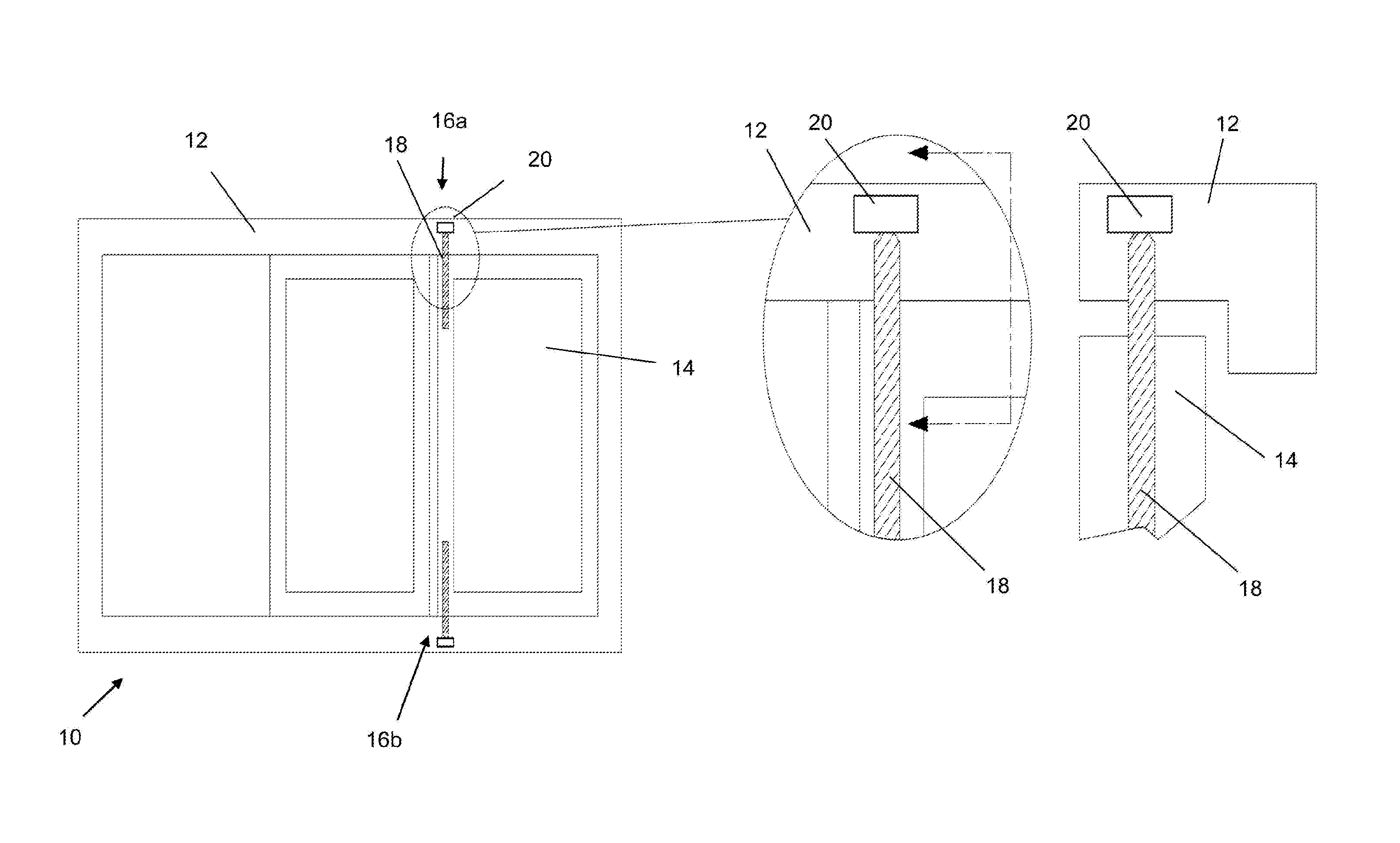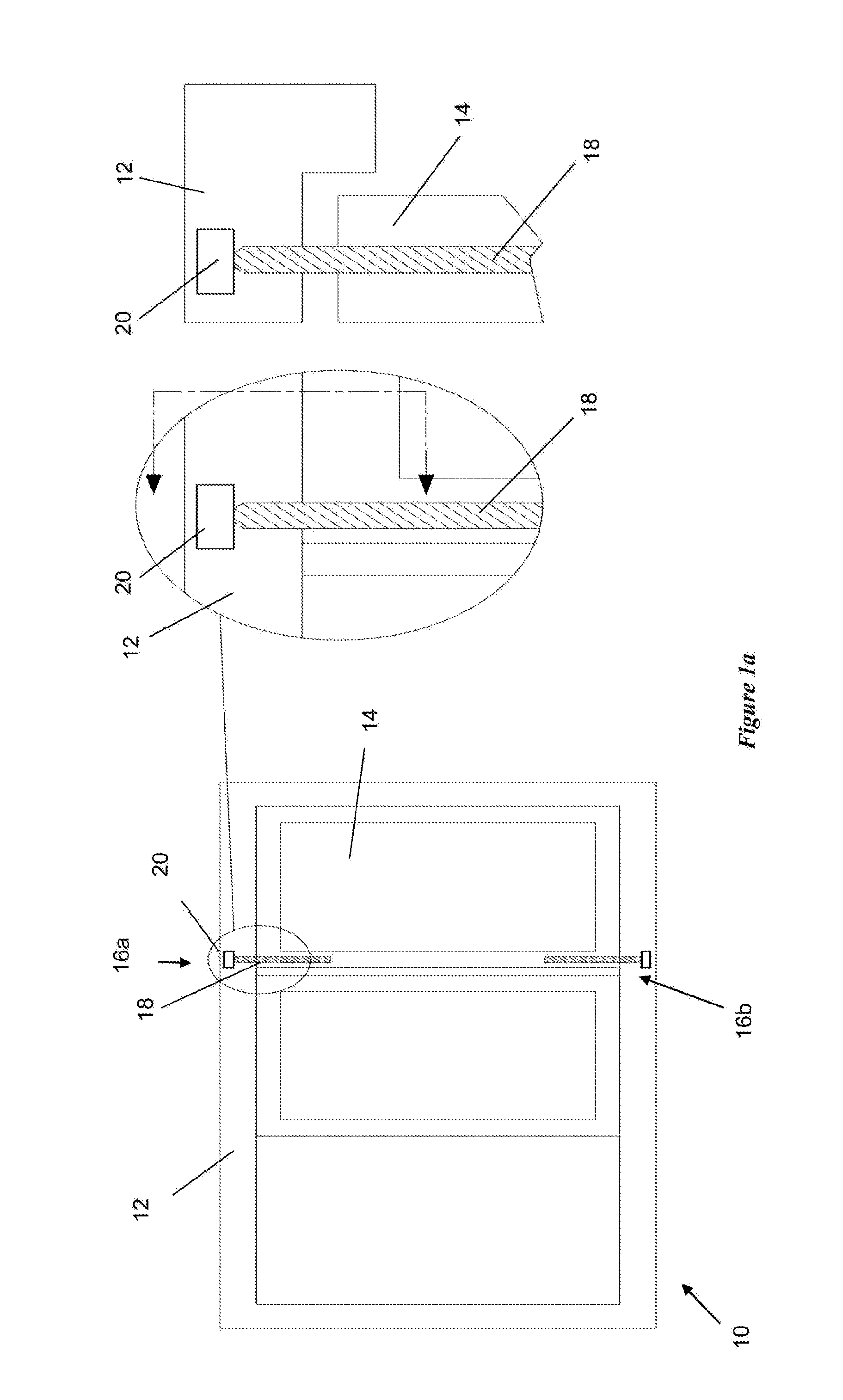Latch mechanism
- Summary
- Abstract
- Description
- Claims
- Application Information
AI Technical Summary
Benefits of technology
Problems solved by technology
Method used
Image
Examples
Embodiment Construction
[0076]FIG. 1a illustrates a bifold door 10 having three door panels (only two shown) attached to a bifold door frame 12. One of the door panels 14 has two latch mechanisms 16a, 16b. One latch mechanism 16a is mounted proximate a top left corner of the door panel 14, and the other latch mechanism 16b is mounted proximate a bottom left corner of the door panel 14.
[0077]Each latch mechanism 16a, 16b includes a magnetic bolt 18 mounted in the door panel 14 and a ferromagnetic block 20 mounted in the door frame 12. The door frame 12 defines a channel opening (not shown) directly below the ferromagnetic block 20 to allow magnetic engagement between the magnetic bolt 18 and the ferromagnetic block 20 when the latch mechanism 16 in the latched position as shown in FIG. 1a.
[0078]When each latch mechanism 16a, 16b is in its latched position as shown in FIG. 1a, the respective magnetic bolt 18 is held within the respective channel opening of the door frame 12 so as to prevent movement of the ...
PUM
 Login to View More
Login to View More Abstract
Description
Claims
Application Information
 Login to View More
Login to View More - R&D
- Intellectual Property
- Life Sciences
- Materials
- Tech Scout
- Unparalleled Data Quality
- Higher Quality Content
- 60% Fewer Hallucinations
Browse by: Latest US Patents, China's latest patents, Technical Efficacy Thesaurus, Application Domain, Technology Topic, Popular Technical Reports.
© 2025 PatSnap. All rights reserved.Legal|Privacy policy|Modern Slavery Act Transparency Statement|Sitemap|About US| Contact US: help@patsnap.com



